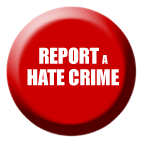In one of our middle school partnerships with Tustin Unified School District, our Restorative Justice Specialist (RJS) Desiré J. Campusano, works closely with school counselors and teachers to support healthy relationship building and conflict resolution. Our restorative schools program roots its work in the belief in everyone’s capacity for empathy, so Desiree was inspired when she had the opportunity to work with special education students. In her experience, special education students’ capacity to feel and empathize are always evident but their ability to communicate clearly and effectively in conflict is where barriers arise. This is the connection the school counselor and RJS identified between their Socio emotional learning (SEL)/community building work and the work of special education teachers. Desiré and the school counselor were approached by the assistant principal to address an ongoing conflict between two students in a multi-level/varied need special education class that were harming one another. One would make faces and express sensitivity and emotion when she didn’t feel accepted or perceived being picked on and the other was very impulsive and went to physical pushing and hitting without taking much time to think.
special education students’ capacity to feel and empathize are always evident but their ability to communicate clearly and effectively in conflict is where barriers arise
The students had the most trouble while out at lunch and during other unstructured social time. After the RJS/School counselor team met with the students four different times for dialogue and time to truly listen to one another, a teacher shared a resource called social circles by Psychologist James Stanfield. Desiré and the school counselor learned that Research in Social Psychology has firmly established that most social skills can be and are learned “vicariously.” In other words, social skills don’t have to be learned the hard way, through trial and error. We can also learn by watching the social mistakes of others. We can learn what’s acceptable behavior and what is not by observing the consequences of someone else’s social behavior. We learn what is appropriate social behavior by observing what behavior brings a reward. The RJS and school counselor have the most experience and expertise working with general education students and felt challenged by the case referral at first. They learned, though, that their conflict looked similar to other conflicts they’ve supported the resolution of. The difference they identified was in the way they needed adults to respond and support them.
Special Education students are part of the school community and their needs matter.
In their first meeting, both professionals became challenged in a good way and were inspired by how much they were learning from the students and their different needs and abilities. It quickly became a journey of identifying ways they (the students) hurt or annoyed one another, allowing time for tears, learning what triggers the students as well as what excited them about school and life. Desiré and the school counselor found themselves getting creative and sought out strategies and processes developed by students and educators in the book “Restorative Practices and Special Needs,” by Burnett and Thorsborne. The RJS and school counselor felt that they would do students a disservice if they did not follow up and reward them for their progress in using kind words and showing respect to one another. It was also important to acknowledge that the door is open for continued communication and support through conflict resolution and community building; especially as everyone can learn from one another to have a better experience in school.
the presence of a Restorative Justice philosophy and approach (in schools) can enhance and support the practices of special education teachers, staff and school counselors.
Their closing meeting with the students and knowledge gained from checking in with special education teachers led them to participate in the TPS Innovative grants program. The project they have proposed has already left a lasting impact and serves as a catalyst to the motivation to move beyond the invisibilization of special education populations in public schools. They’re a part of the school community and their needs matter. The purpose of their proposed project is to provide opportunities for special education students to participate in healthy relationship building processes. The development of student featured videos will demonstrate healthy communication strategies via social circles program approaches with a focus on talk and trust building. Restorative techniques will also be utilized to support students through dialogues meant to restore relationships through healing harms in collaboration with the social circles program. This is an innovative project because it will foster stronger collaboration and a lasting partnership between Special Education, School Counseling, and Restorative Practices (RP). Students will be involved from start to finish via focus group, video development, and dialogue question review for continued learning in tutorial and other special education class time meant to continuously foster community, acceptance and willingness to work together through relationship challenges. Overall, there was so much more learned than what’s been described here but the need for collaboration and community building in public schools ( across disciplines and student populations) tells us that the presence of a Restorative Justice philosophy and approach can enhance and support the practices of special education teachers, staff and school counselors.

